Perturbations in Bianchi-V Spacetimes with Varying Λ, G and Viscous Fluids
Abstract
1. Introduction
2. Background Field Equations
3. Perturbations
4. Results and Discussion
- If we normalize the perturbations at some redshift in the past and evolve them, we expect larger amplitudes today, in the case of GR without , as opposed to the CDM case with constants and G;
- If we consider evolving G and , the perturbation amplitudes today will be higher than that of CDM, but smaller than that of GR without ;
- If we include viscosity, the perturbation amplitudes today are much higher than those of CDM and GR without . This might suggest that, although we analysed our results up to linear perturbations, the system is actually highly nonlinear, as observed for another non-CDM scenario in a recent study [45].
- Increasing decreases the late-time perturbation amplitude in the short-wavelength regime, but this effect is reversed for ;
- Increasing increases the perturbation amplitude in the long-wavelength regime;
- Increasing increases the perturbation amplitudes in both the short- and long-wavelength regimes;
- Increasing n increases the perturbation amplitudes in both the short- and long-wavelength regimes.
5. Discussions and Conclusions
Author Contributions
Funding
Institutional Review Board Statement
Informed Consent Statement
Data Availability Statement
Acknowledgments
Conflicts of Interest
| 1 | From here onwards, we will set for simplicity. |
References
- Perlmutter, S.; Gabi, S.; Goldhaber, G.; Goobar, A.; Groom, D.E.; Hook, I.M.; Pennypacker, C.R. Measurements of the Cosmological Parameters Ω and Λ from the First Seven Supernovae at z ≥ 0.35. Astrophys. J. 1997, 483, 565. [Google Scholar] [CrossRef]
- Perlmutter, S.; Aldering, G.; Della Valle, M.; Deustua, S.; Ellis, R.S.; Fabbro, S.; Kim, A.G. Discovery of a supernova explosion at half the age of the Universe. Nature 1998, 391, 51–54. [Google Scholar] [CrossRef]
- Perlmutter, S.; Aldering, G.; Goldhaber, G.; Knop, R.A.; Nugent, P.; Castro, P.G.; Hook, I.M. Measurements of Ω and Λ from 42 high-redshift supernovae. Astrophys. J. 1999, 517, 565. [Google Scholar] [CrossRef]
- Riess, A.G.; Filippenko, A.V.; Challis, P.; Clocchiatti, A.; Diercks, A.; Garnavich, P.M.; Leibundgut, B.R.U.N.O. Observational evidence from supernovae for an accelerating universe and a cosmological constant. Astron. J. 1998, 116, 1009. [Google Scholar] [CrossRef]
- Basilakos, S.; Sola, J. Growth index of matter perturbations in running vacuum models. Phys. Rev. D 2015, 92, 123501. [Google Scholar] [CrossRef]
- Gómez-Valent, A.; Karimkhani, E.; Solà, J. Background history and cosmic perturbations for a general system of self-conserved dynamical dark energy and matter. J. Cosmol. Astropart. Phys. 2015, 2015, 048. [Google Scholar] [CrossRef]
- Grande, J.; Sola, J.; Fabris, J.C.; Shapiro, I.L. Cosmic perturbations with running G and Λ. Class. Quantum Gravity 2010, 27, 105004. [Google Scholar] [CrossRef]
- Fabris, J.C.; Shapiro, I.L.; Sola, J. Density perturbations for a running cosmological constant. J. Cosmol. Astropart. Phys. 2007, 2007, 016. [Google Scholar] [CrossRef]
- Panotopoulos, G.; Rincón, Á. Growth of structures and redshift-space distortion data in scale-dependent gravity. Eur. Phys. J. Plus 2021, 136, 1–14. [Google Scholar] [CrossRef]
- Bonanno, A.; Saueressig, F. Asymptotically safe cosmology—A status report. Comptes Rendus Phys. 2017, 18, 254–264. [Google Scholar] [CrossRef]
- Bianchi, L. Memorie di Matematica e di Fisica della Societa Italiana delle Scienze, serie III. Tomo XI, 267 (1898); English translation. Gen. Rel. Grav. 2001, 33, 2157. [Google Scholar]
- Bianchi, L. Lezioni sulla Teoria dei Gruppi Continui finiti di Trasformazioni; Lectures on the Theory of Finite Continuous Transformation Groups; E. Spoerri: Pisa, Italy, 1918; see Sections 198–199, 550, (1902–1903). [Google Scholar]
- Dirac, P.A.M. The Cosmological Constants. Nature 1937, 139, 323. [Google Scholar] [CrossRef]
- Alfedeel, A.H.; Abebe, A.; Gubara, H.M. A Generalized Solution of Bianchi Type-V Models with Time-Dependent G and Λ. Universe 2018, 4, 83. [Google Scholar] [CrossRef]
- Alfedeel, A.H.; Abebe, A. Bianchi Type-V Solutions with Varying G and Λ: The General Case. Int. J. Geom. Methods Mod. Phys. 2020, 17, 2050076. [Google Scholar] [CrossRef]
- Vishwakarma, R.G. A model of the universe with decaying vacuum energy. Pramana J. Phys. 1996, 47, 41. [Google Scholar]
- Vishwakarma, R.G. Dissipative cosmology with decaying vacuum energy. Indian J. Phys. 1996, 70, 321. [Google Scholar]
- Vishwakarma, R.G. LRS Bianchi type-I models with a time-dependent cosmological constant. Phys. Rev. D 1999, 60, 3507. [Google Scholar] [CrossRef]
- Vishwakarma, R.G. A study of angular size-redshift relation for models in which Λ decays as the energy density. Class. Quantum Gravity 2000, 17, 3833. [Google Scholar] [CrossRef]
- Vishwakarma, R.G. Consequences on variable Λ-models from distant type Ia supernovae and compact radio sources. Class. Quantum Gravity 2001, 18, 11–59. [Google Scholar] [CrossRef]
- Vishwakarma, R.G. A model to explain varying Λ, G and σ2 simultaneously. Gen. Relativ. Gravit. 2005, 37, 1305. [Google Scholar] [CrossRef]
- Bali, R.; Singh, P.; Singh, J.P. Bianchi type-V viscous fluid cosmological models in presence of decaying vacuum energy. Astrophys. Space Sci. 2012, 341, 701–706. [Google Scholar] [CrossRef]
- Singh, J.P.; Baghel, P.S. Bulk viscous bianchi Type-V cosmological models with decaying cosmological term Λ. Int. Theor. Phys. 2010, 49, 2734–2744. [Google Scholar] [CrossRef]
- Padmanabhan, T.; Chitre, S.M. Viscous universes. Phys. Lett. A 1987, 120, 433–436. [Google Scholar] [CrossRef]
- Alfedeel, A.H.A.; Tiwari, R.K.; Sofuoğlu, D.; Abebe, A.; Hassan, E.I.; Shukla, B.K. A cosmological model with time dependent Λ, G and viscous fluid in General Relativity. Front. Astron. Space Sci. 2022, 9, 965652. [Google Scholar]
- Williams, J.G.; Turyshev, S.G.; Boggs, D.H. Lunar laser ranging tests of the equivalence principle with the earth and moon. Int. J. Mod. Phys. D 2009, 18, 1129–1175. [Google Scholar] [CrossRef]
- Copi, C.J.; Davis, A.N.; Krauss, L.M. New nucleosynthesis constraint on the variation of G. Phys. Rev. Lett. 2004, 92, 171301. [Google Scholar] [CrossRef]
- Pavon, D.; Bafaluy, J.; Jou, D. Causal Friedmann-Robertson-Walker cosmology. Class. Quantum Gravity 1991, 8, 347. [Google Scholar] [CrossRef]
- Maartens, R. Dissipative cosmology. Class. Quantum Gravity 1995, 12, 1455. [Google Scholar] [CrossRef]
- Zimdahl, W. Bulk viscous cosmology. Phys. Rev. D 1996, 53, 5483. [Google Scholar] [CrossRef]
- Santos, N.O.; Dias, R.S.; Banerjee, A. Isotropic homogeneous universe with viscous fluid. J. Math. Phys. 1985, 26, 878–881. [Google Scholar] [CrossRef]
- Gidelew, A.A. Covariant Perturbations in f(R)-Gravity of Multi-Component Fluid Cosmologies. Master’s Thesis, University of Cape Town, Cape Town, South Africa, 2009. [Google Scholar]
- Lifshitz, E.M. On the gravitational stability of the expanding universe. J. Phys. 1946, 10, 116–129. [Google Scholar]
- Bardeen, J.M. Gauge-invariant cosmological perturbations. Phys. Rev. D 1980, 22, 1882. [Google Scholar] [CrossRef]
- Kodama, H.; Sasaki, M. Cosmological perturbation theory. Prog. Theor. Phys. Suppl. 1984, 78, 1–166. [Google Scholar] [CrossRef]
- Ehlers, J. Beiträge zur relativistischen Mechanik kontinuierlicher Medien. In Abhandlungen der Mathematisch-Naturwissenschaftlichen Klasse; Akademie der Wissenschaften und der Literatur: Mainz, Germany, 1961; pp. 793–836. [Google Scholar]
- Hawking, S.W. Perturbations of an expanding universe. Astrophys. J. 1966, 145, 544. [Google Scholar] [CrossRef]
- Olson, D.W. Density perturbations in cosmological models. Phys. Rev. D 1976, 14, 327. [Google Scholar] [CrossRef]
- Ellis, G.F.; Bruni, M. Covariant and gauge-invariant approach to cosmological density fluctuations. Phys. Rev. D 1989, 40, 1804. [Google Scholar] [CrossRef]
- Dunsby, P.K.; Bruni, M.; Ellis, G.F. Covariant perturbations in a multifluid cosmological medium. Astrophys. J. 1992, 395, 54–74. [Google Scholar] [CrossRef]
- Bruni, M.; Dunsby, P.; Ellis, G.F.R. Cosmological perturbations and the physical meaning of gauge-invariant variables. Astrophys. J. 1992, 395, 34. [Google Scholar] [CrossRef]
- Clarkson, C.A.; Barrett, R.K. Covariant perturbations of Schwarzschild black holes. Class. Quantum Gravity 2003, 20, 3855. [Google Scholar] [CrossRef]
- Carloni, S.; Dunsby, P.K.S.; Troisi, A. Evolution of density perturbations in f(R) gravity. Phys. Rev. D 2008, 77, 024024. [Google Scholar] [CrossRef]
- Abebe, A.; Abdelwahab, M.; De la Cruz-Dombriz, Á.; Dunsby, P.K. Covariant gauge-invariant perturbations in multifluid f(R) gravity. Class. Quantum Gravity 2012, 29, 135011. [Google Scholar] [CrossRef]
- Sami, H.; Sahlu, S.; Abebe, A.; Dunsby, P.K. Covariant density and velocity perturbations of the quasi-Newtonian cosmological model in f(T) gravity. Eur. Phys. J. C 2021, 81, 1–17. [Google Scholar] [CrossRef]
- Sahlu, S.; Ntahompagaze, J.; Abebe, A.; de la Cruz-Dombriz, A.; Mota, D.F. Scalar perturbations in f(T) gravity using the 1 + 3 covariant approach. Eur. Phys. J. C 2020, 80, 1–19. [Google Scholar] [CrossRef]
- Hough, R.; Sahlu, S.; Sami, H.; Elmardi, M.; Swart, A.M.; Abebe, A. Confronting the Chaplygin gas with data: Background and perturbed cosmic dynamics. arXiv 2021, arXiv:2112.11695. [Google Scholar]
- Sami, H.; Abebe, A. Perturbations of quasi-Newtonian universes in scalar–tensor gravity. Int. J. Geom. Methods Mod. Phys. 2021, 18, 2150158. [Google Scholar] [CrossRef]
- Aghanim, N.; Akrami, Y.; Ashdown, M.; Aumont, J.; Baccigalupi, C.; Ballardini, M.; Roudier, G. Planck 2018 results-VI. Cosmological parameters. Astron. Astrophys. 2020, 641, A6. [Google Scholar]

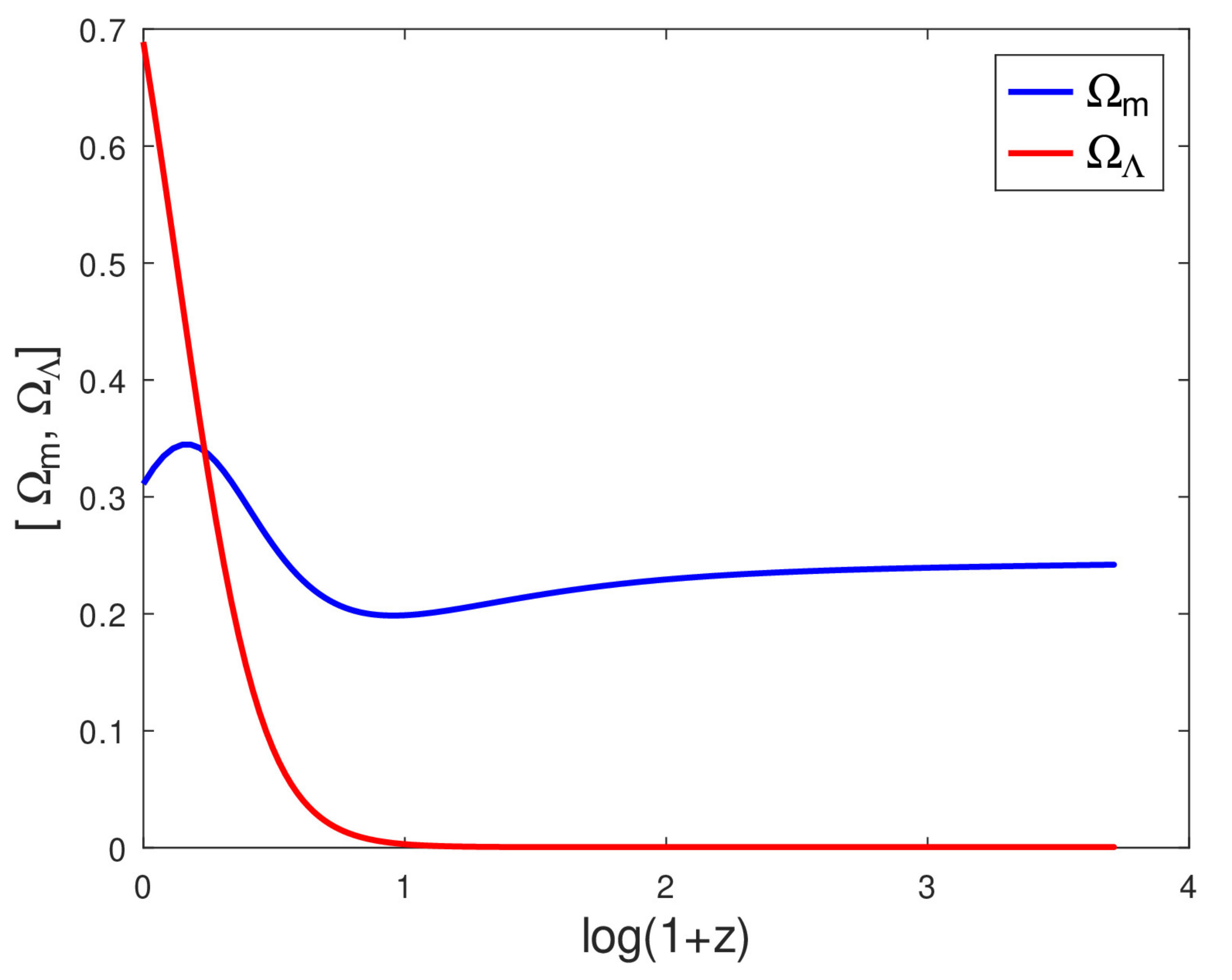

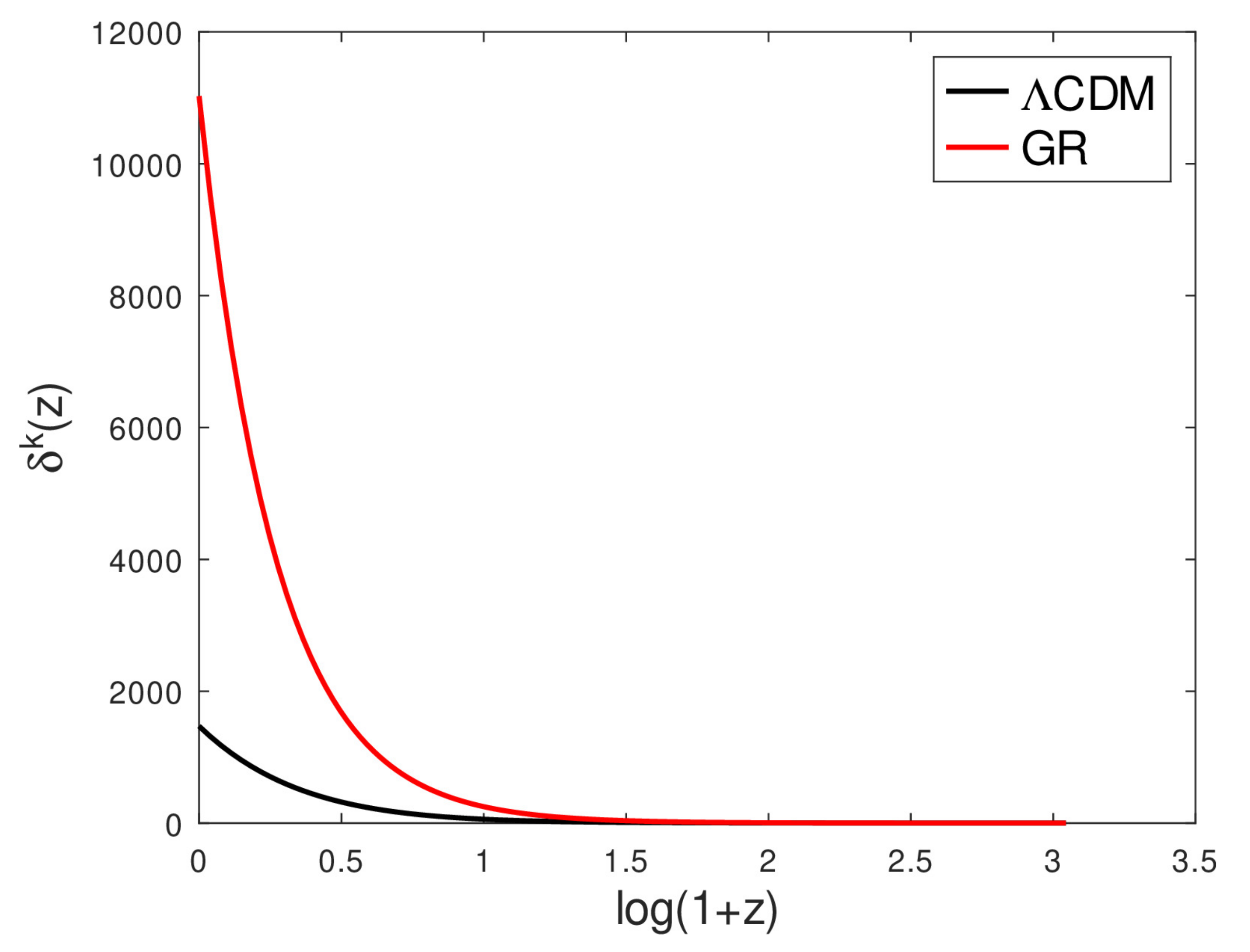
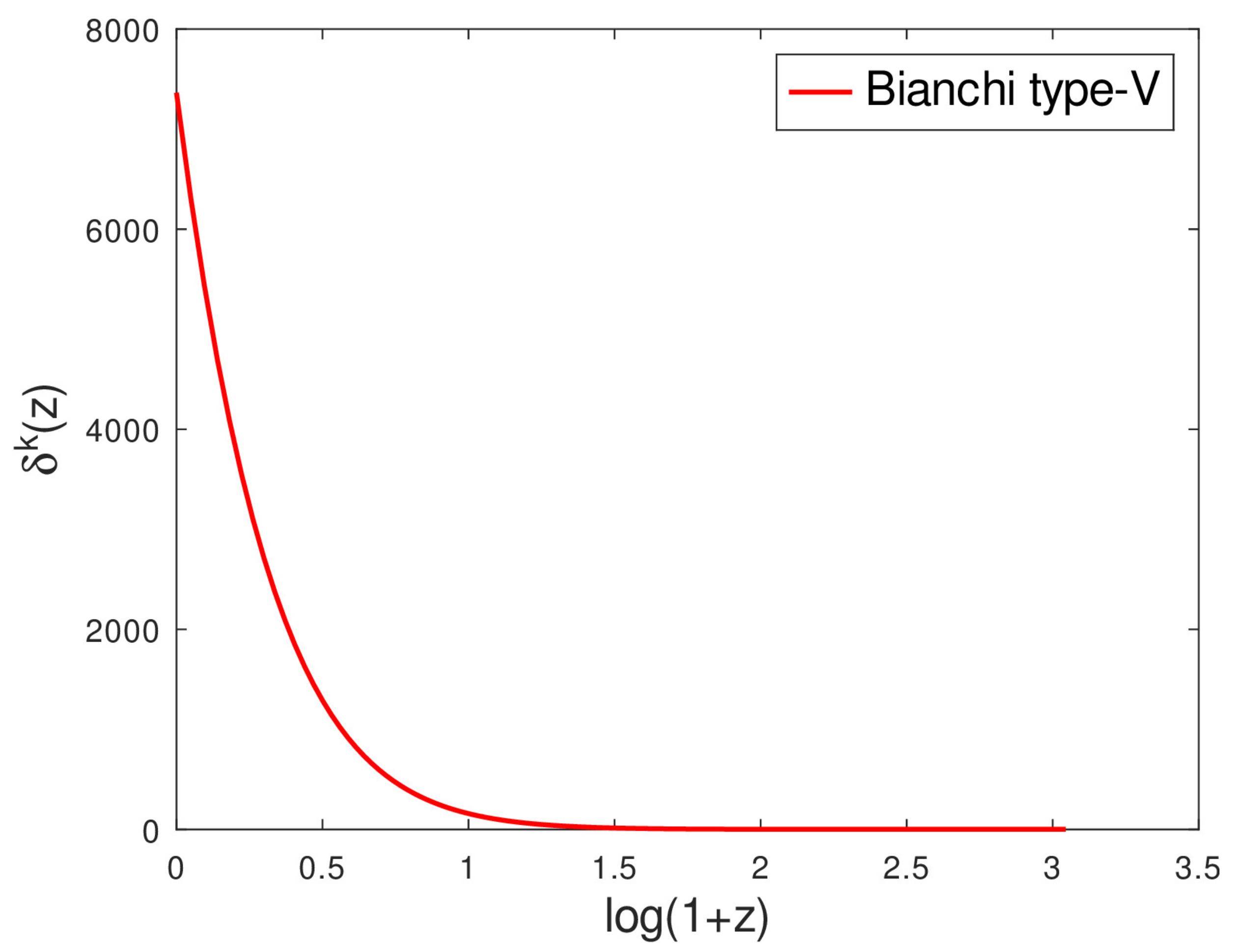
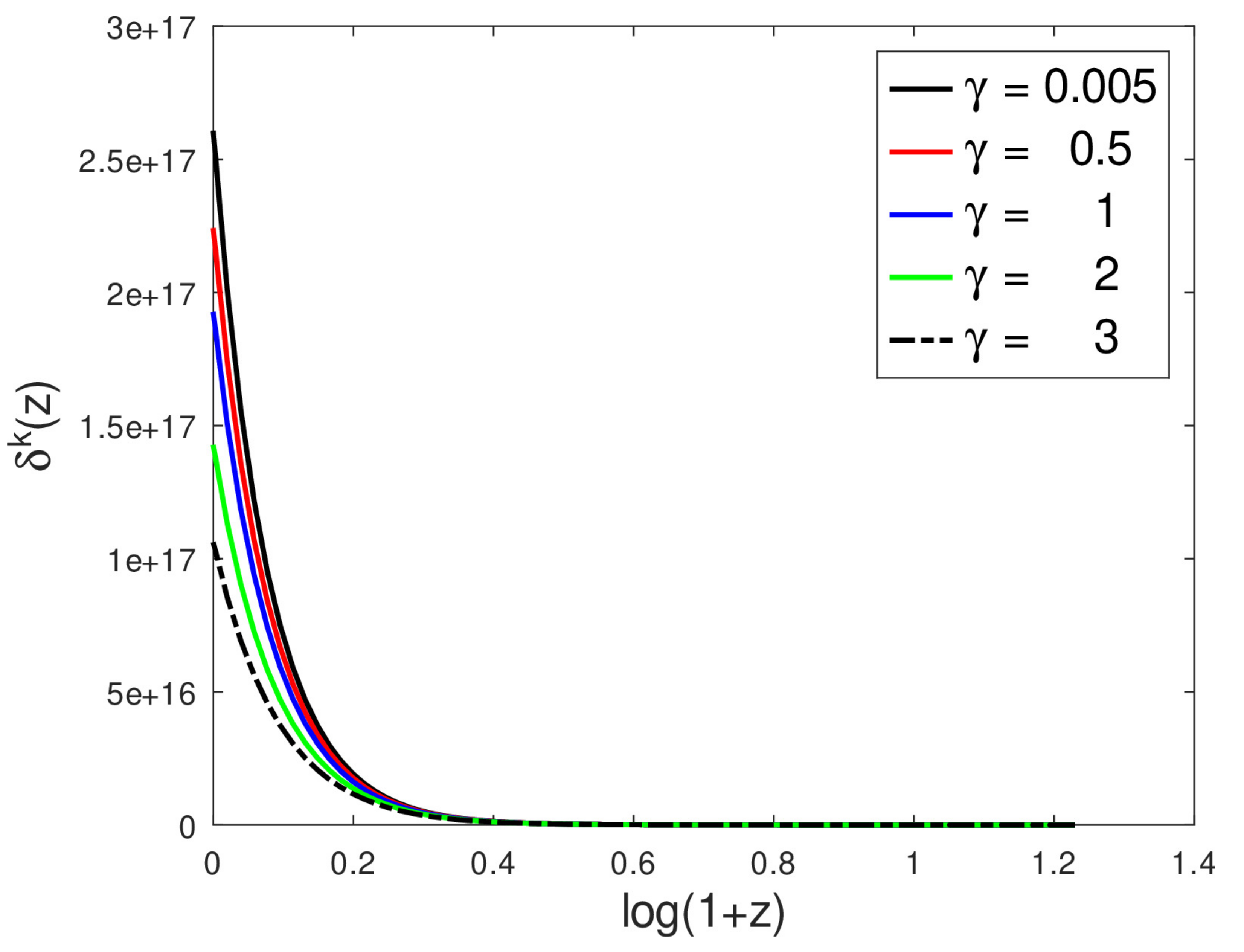

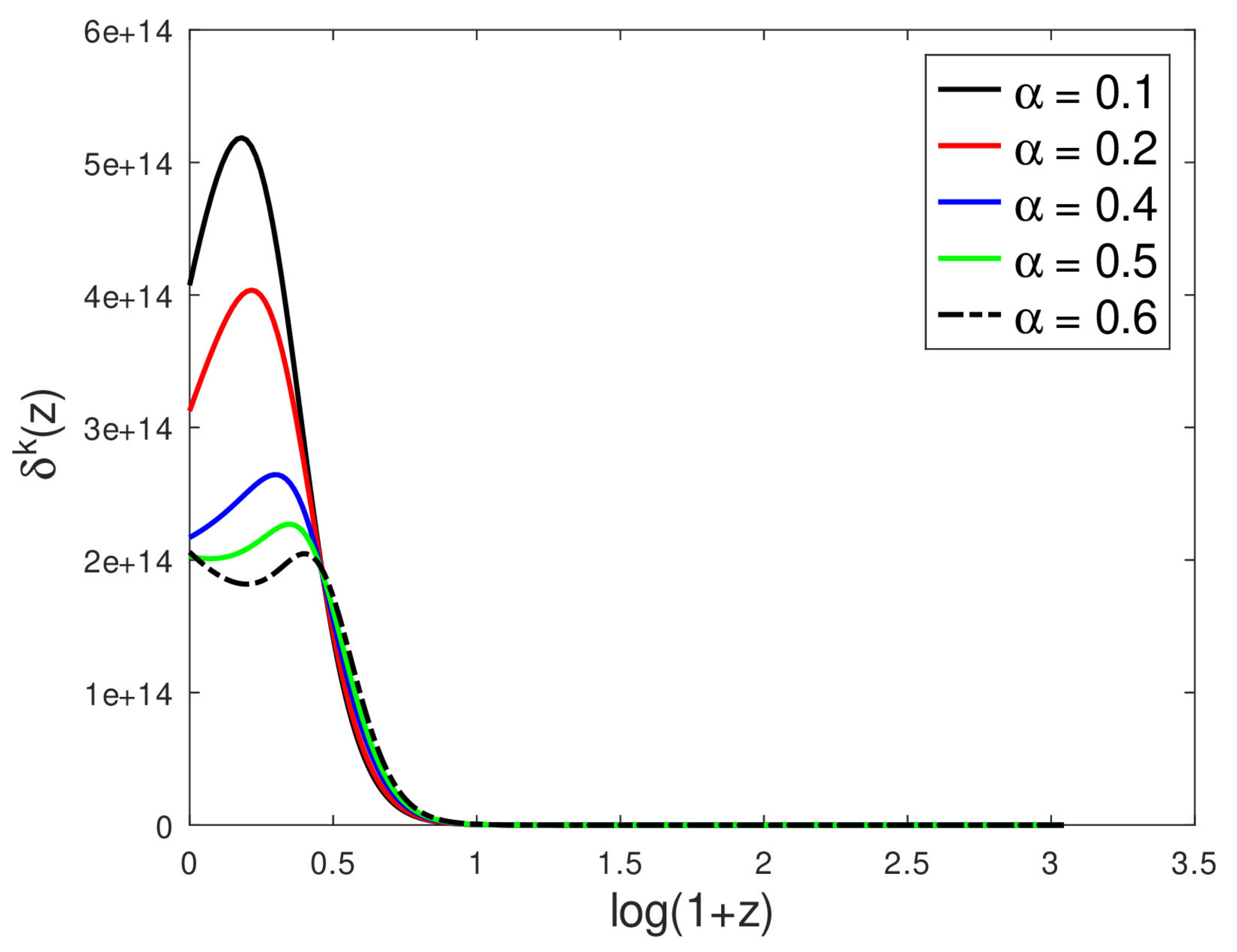
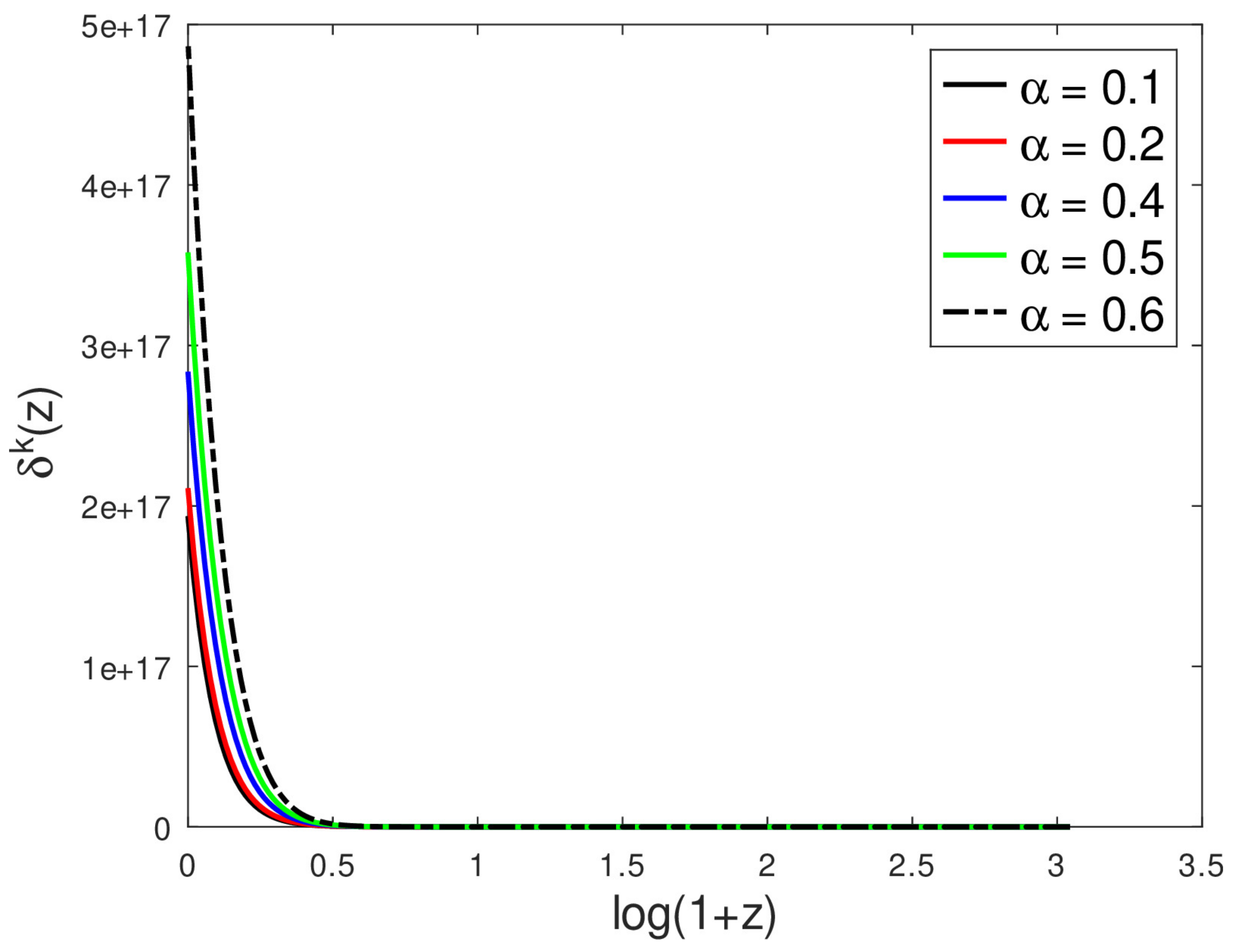
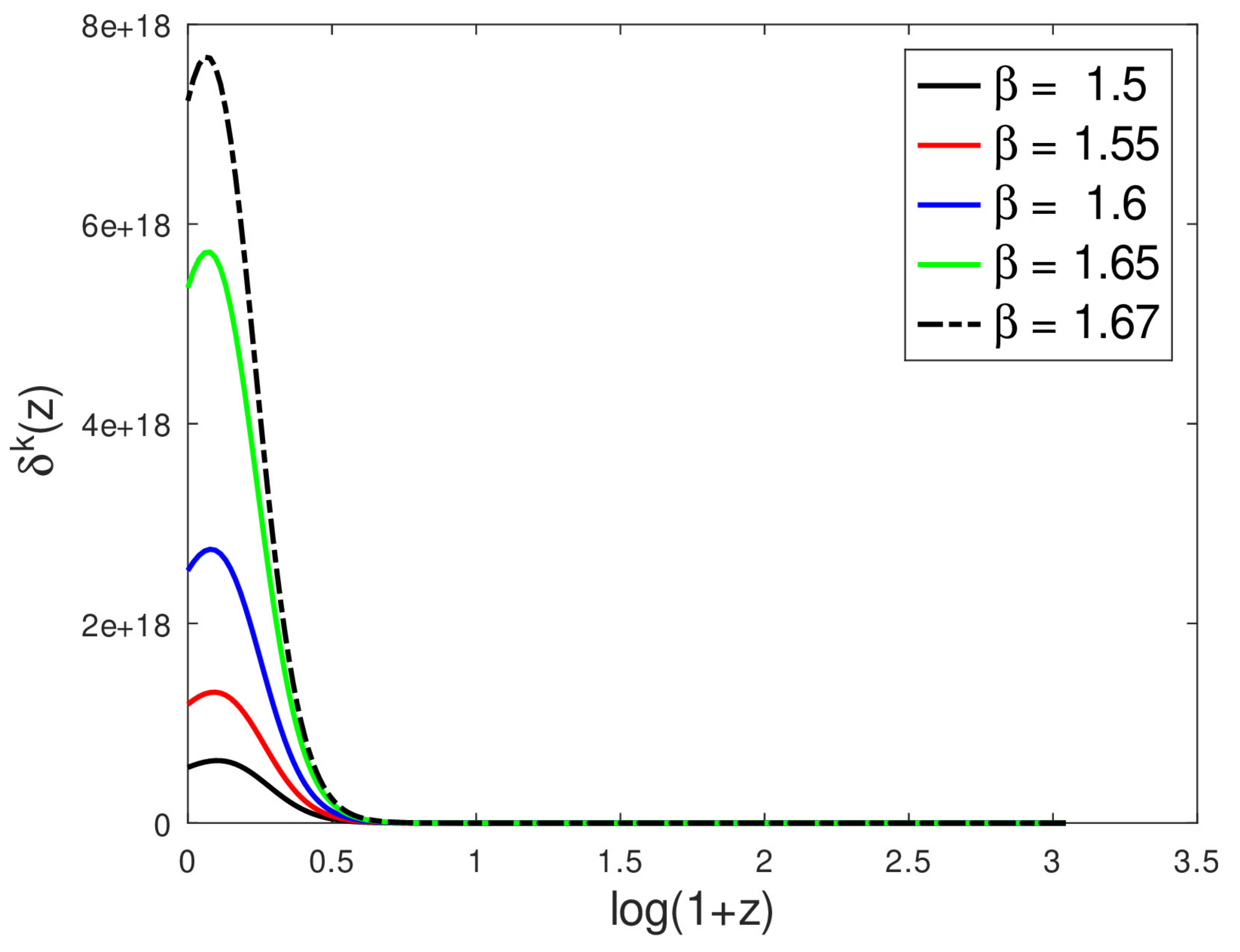
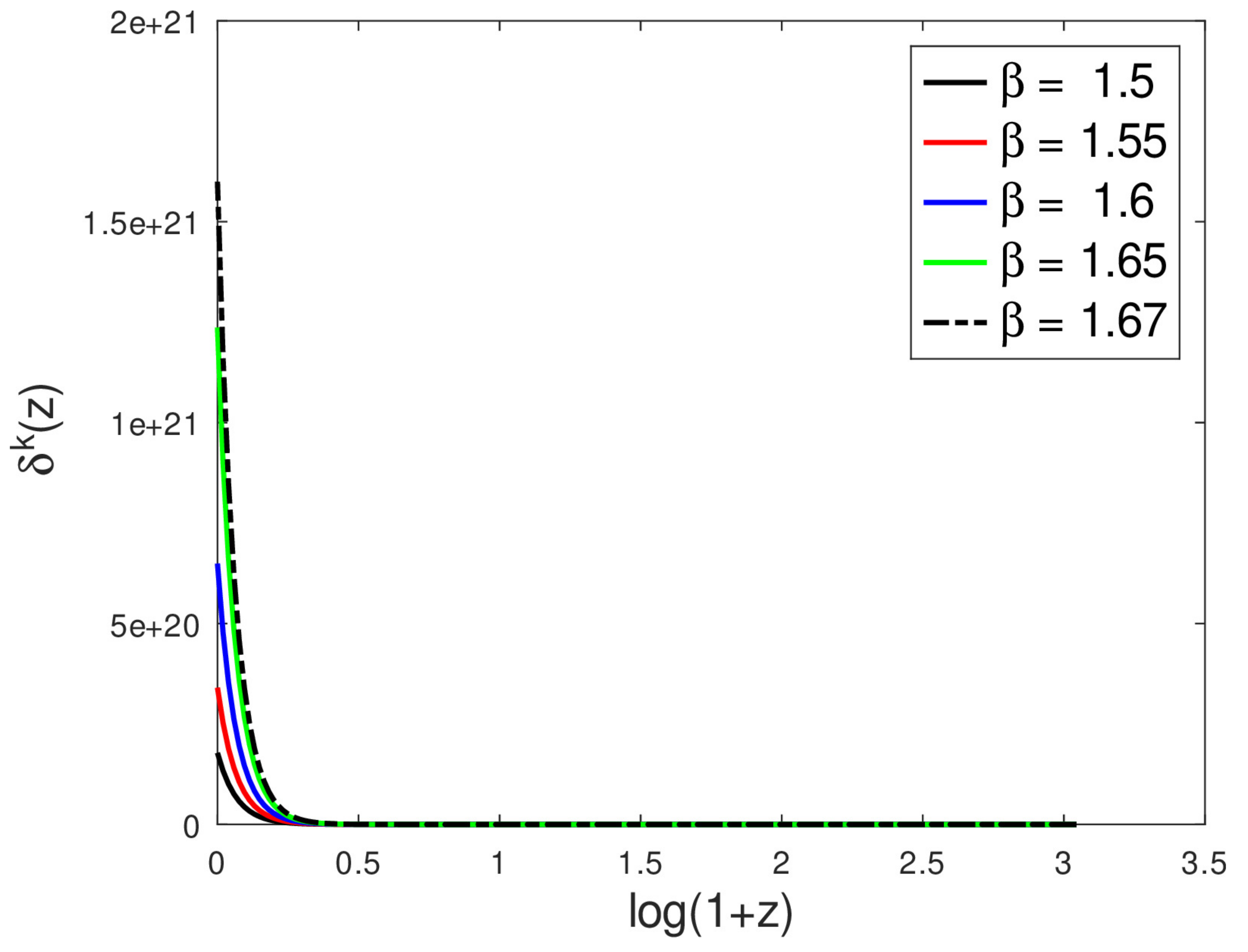

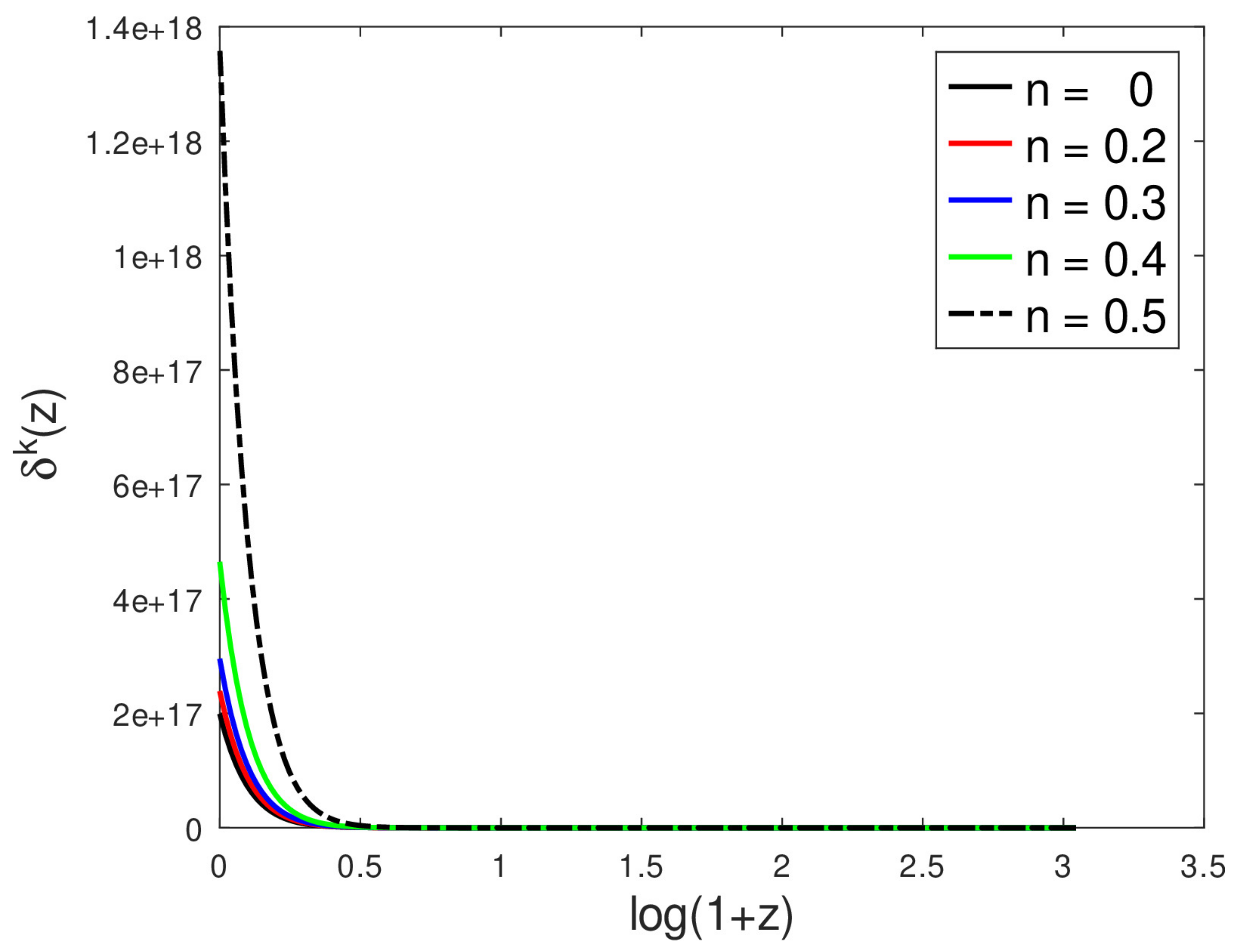
Disclaimer/Publisher’s Note: The statements, opinions and data contained in all publications are solely those of the individual author(s) and contributor(s) and not of MDPI and/or the editor(s). MDPI and/or the editor(s) disclaim responsibility for any injury to people or property resulting from any ideas, methods, instructions or products referred to in the content. |
© 2023 by the authors. Licensee MDPI, Basel, Switzerland. This article is an open access article distributed under the terms and conditions of the Creative Commons Attribution (CC BY) license (https://creativecommons.org/licenses/by/4.0/).
Share and Cite
Abebe, A.; Alfedeel, A.H.A.; Sofuoğlu, D.; Hassan, E.I.; Tiwari, R.K. Perturbations in Bianchi-V Spacetimes with Varying Λ, G and Viscous Fluids. Universe 2023, 9, 61. https://doi.org/10.3390/universe9020061
Abebe A, Alfedeel AHA, Sofuoğlu D, Hassan EI, Tiwari RK. Perturbations in Bianchi-V Spacetimes with Varying Λ, G and Viscous Fluids. Universe. 2023; 9(2):61. https://doi.org/10.3390/universe9020061
Chicago/Turabian StyleAbebe, Amare, Alnadhief H. A. Alfedeel, Değer Sofuoğlu, Eltegani I. Hassan, and Rishi Kumar Tiwari. 2023. "Perturbations in Bianchi-V Spacetimes with Varying Λ, G and Viscous Fluids" Universe 9, no. 2: 61. https://doi.org/10.3390/universe9020061
APA StyleAbebe, A., Alfedeel, A. H. A., Sofuoğlu, D., Hassan, E. I., & Tiwari, R. K. (2023). Perturbations in Bianchi-V Spacetimes with Varying Λ, G and Viscous Fluids. Universe, 9(2), 61. https://doi.org/10.3390/universe9020061





